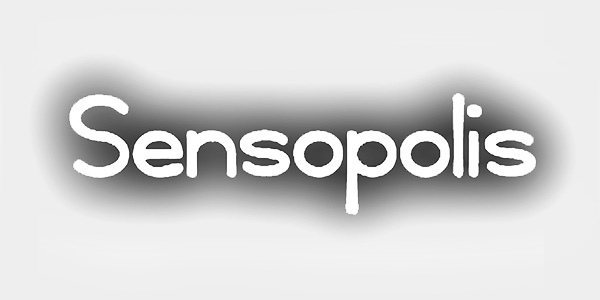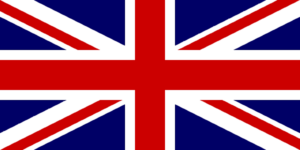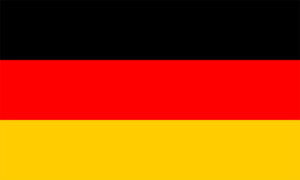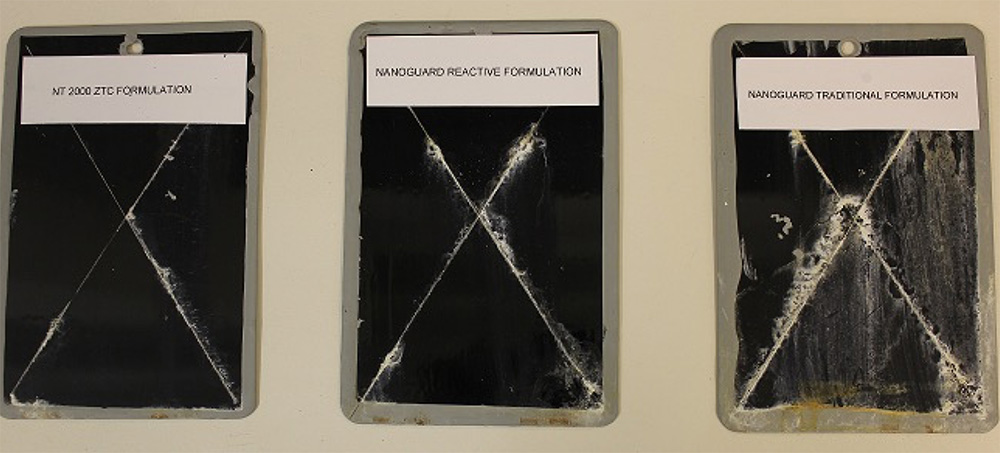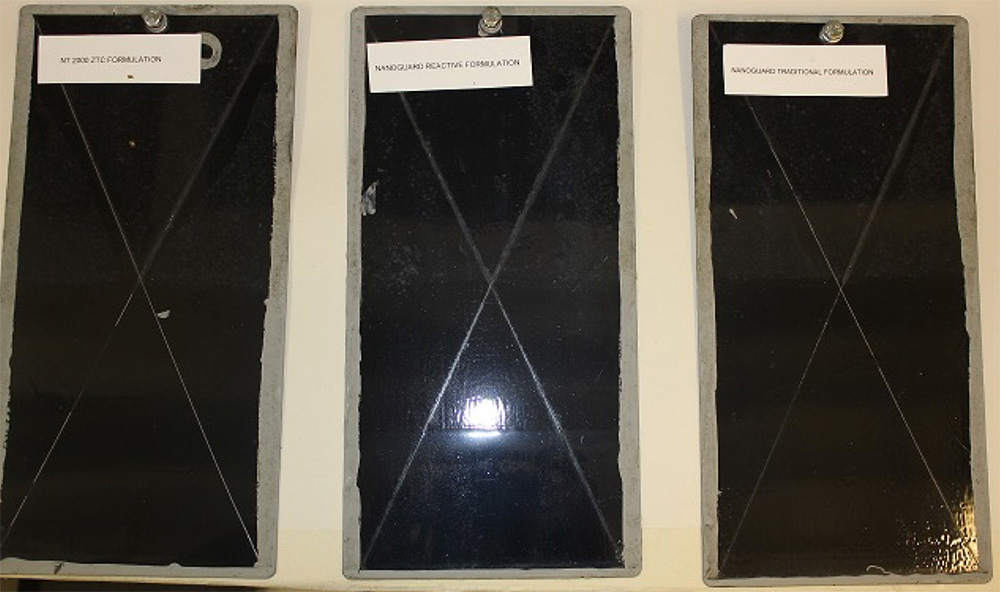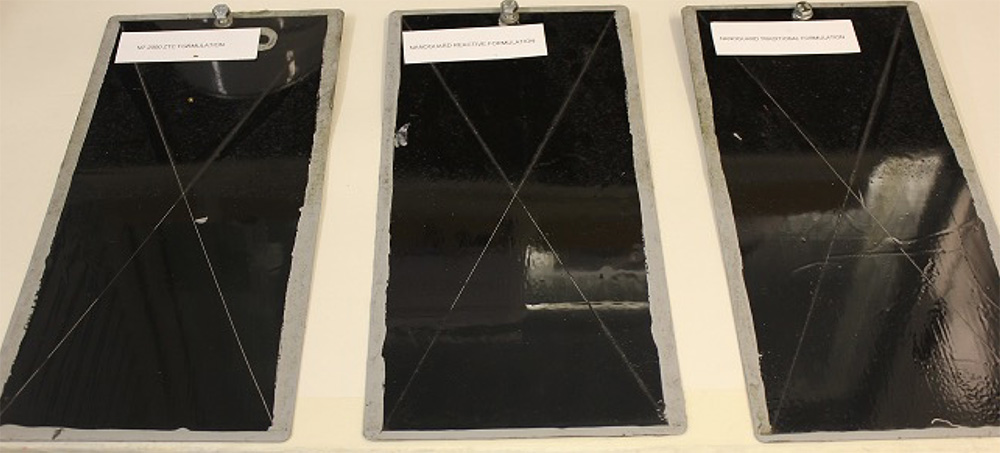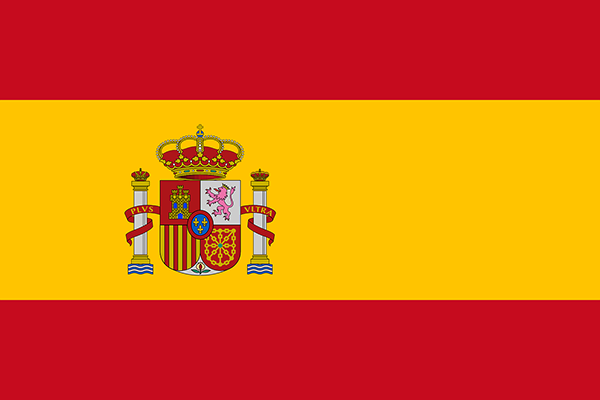
Example applications
ASTM B117 240 hrs
42% PVC Epoxy Primer
Nanoguard ACP® DCP (left)
Zinc Phosphate (right)
ASB117 Salt spray 240 hrs
42% PVC Epoxy Ester
Nanoguard ACP® DCP (left)
Zinc Phosphate (right)
Nanoguard ACP 2
Standard water based acrylic after 800 hours B117 Salt spray showing improved adhesion and reduced under film corrosion compared to a standard formulation with traditional anti corrosive pigments from a well known German producer.
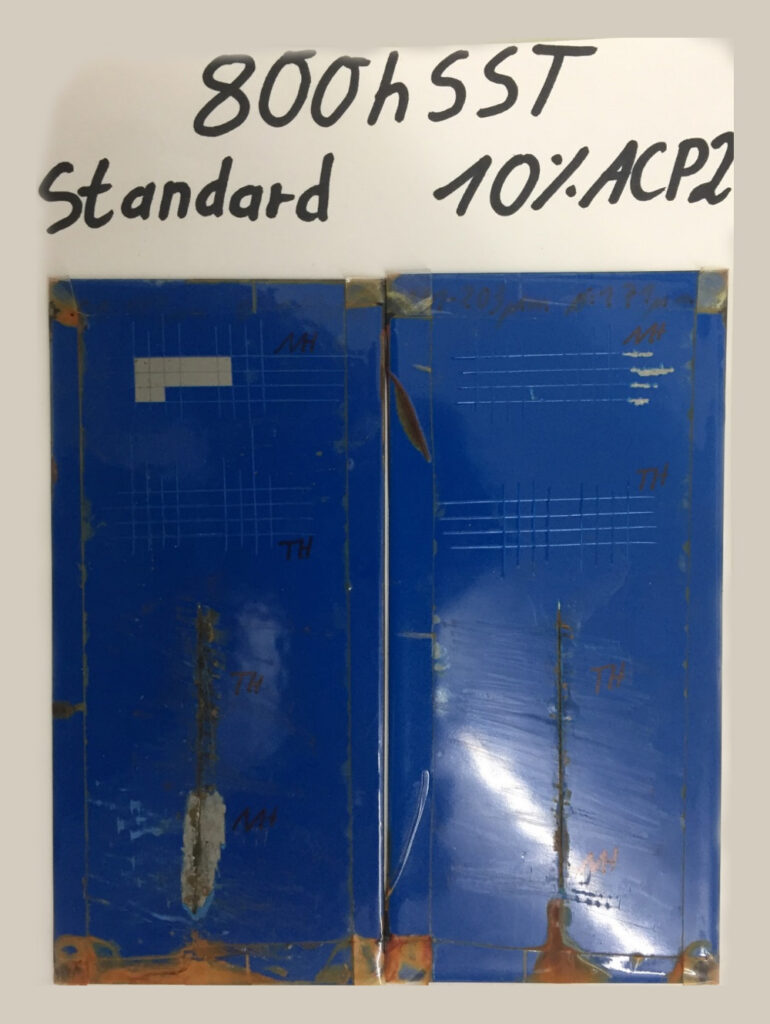
Nanoguard ACP® DCP
Styrene alkyd direct to metal (Nanoguard ACP® DCP – far left) compared to 2 competitive formulations showed an improvement of more than 5 times the anti corrosive efficiency according to one of the leading paint producers. Improved adhesion, reduced under film corrosion compared to competitive formulation compared to products from German, French and American producers.
Example solvent based epoxy melamine
REFERENCE
Solvent based Epoxy/Melamine.
Thickness : 70 µm (dry).
Substrate : Rusted Cold Rolled Steel.
Salt Spray : 500 hours (ASTM B117)
Reference :
Zinc Phosphate vs Nanoguard ACP DCP at 81% of Zinc Phosphate loading
SALT SPRAY B117
Results after 500 hours
Zinc Phosphate at 10.53% (left)
Nanoguard ACP® DCP at 8.49% (right)
Substrate : Rusted Cold Rolled Steel.
Surface treatment : None.
Primer : SB Epoxy/Melamine.
Thickness : 70 µm.
Drying time : 40°C 8hours
Application : Spray gun.
PVC kept constant
Scribe : Manual.
Equivalent or better at 15% less by weight – further improves cost efficiency
1000 hours Calcium ion exchange vs Nanoguard ACP®2 – Phenolic alkyd
Phenolic alkyd 6% ion exchange pigment (left)
Phenolic alkyd 6% CIEP Nanoguard ACP®2 pigment (right)
1000 hours Prohesion ion exchange vs Nanoguard ACP®2 – Epoxy Polyamide 42 microns
1 type epoxy polyamide 6% ion exchange pigment (left)
1 type epoxy polyamide 6% Nanoguard ACP®2 (right)
Reduced undercut corrosion and depth of corrosion compared to market leading ion exchange pigments at same loading
2000 hours salt spray B117
Zinc tetroxychromate vs Nanoguard ACP®2
5 – 10 µ polyvinylbutyrol etch primer as part of 3 coat system 70 – 80 µ total dft
Good performance even in non ideal conditions on aluminium Q panels
15 month real life exposure
Zinc tetroxychromate vs Nanoguard ACP®2
5 – 10 µ polyvinylbutyrol etch primer as 3 coat system 70 – 80 µ total dry film thickness
Excellent performance in real life conditions! Aluminium Q panels – Automotive testing
15 month real life exposure
Zinc tetroxychromate vs Nanoguard ACP®2
5 – 10 µ polyvinylbutyrol etch primer.
3 coat system 70 – 80 µ total dry film thickness
Zinc Tetroxychromate (left)
Nanoguard ACP 2 (centre)
Nanoguard ACP DCP (right)
Excellent performance in real life conditions! Aluminium Q panels – Automotive testing
